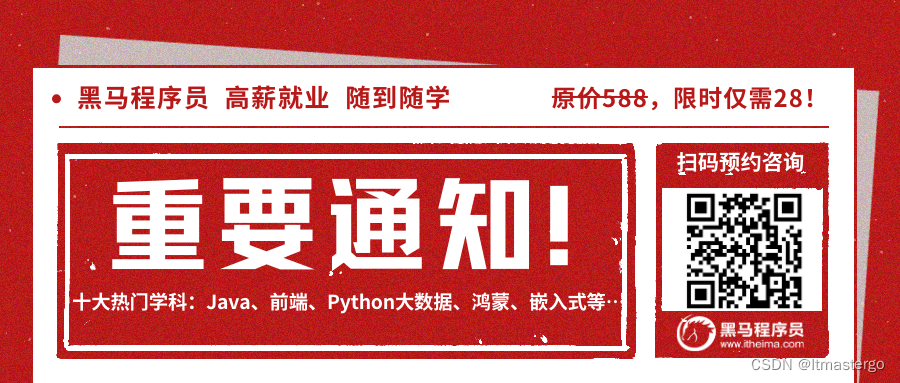在Java编程语言中,变量和作用域是两个核心概念。理解变量的声明、初始化以及它们的作用域对于编写健壮且高效的代码至关重要。
变量的声明与初始化
变量的声明
在Java中,变量的声明指的是定义变量的名称和类型。在Java中,变量声明的一般语法如下:
type variableName;
这里,type表示变量的数据类型,例如int、double、char等,variableName是变量的名称。
举例说明:
int number;
double salary;
char grade;
以上代码分别声明了一个整型变量number,一个双精度浮点型变量salary,和一个字符型变量grade。
变量的初始化
变量的初始化是指为变量赋予初始值。Java要求所有变量在使用前必须进行初始化。这可以在声明变量时直接进行,或者在稍后的代码中进行。
在声明时初始化:
int number = 10;
double salary = 5000.0;
char grade = 'A';
在声明后初始化:
int number;
number = 10;double salary;
salary = 5000.0;char grade;
grade = 'A';
Java支持多种类型的变量初始化,包括字面量初始化、表达式初始化和方法返回值初始化。
局部变量
局部变量是在方法内部声明的变量。它们只能在声明它们的方法内部使用。局部变量在方法调用时被创建,在方法返回后被销毁。
public void exampleMethod() {int localVariable = 10;System.out.println(localVariable);
}
成员变量
成员变量是类级别的变量,分为实例变量和类变量(即静态变量)。实例变量属于类的每个实例,而静态变量则属于类本身,不依赖于类的任何实例。
public class ExampleClass {int instanceVariable; // 实例变量static int staticVariable; // 类变量(静态变量)
}
实例变量的初始化
实例变量可以在声明时初始化,或者在构造函数中初始化。
public class ExampleClass {int instanceVariable = 10; // 声明时初始化// 构造函数中初始化public ExampleClass(int value) {instanceVariable = value;}
}
静态变量的初始化
静态变量可以在声明时初始化,或者在静态代码块中初始化。
public class ExampleClass {static int staticVariable = 10; // 声明时初始化// 静态代码块中初始化static {staticVariable = 20;}
}
变量的作用域
变量的作用域是指变量在程序中可见和可以使用的范围。Java中的作用域主要分为四种:局部作用域、实例作用域、类作用域和块作用域。
局部作用域
局部变量的作用域仅限于声明它的方法内。在方法结束后,局部变量会被销毁。
public void exampleMethod() {int localVariable = 10; // 局部变量System.out.println(localVariable);// localVariable的作用域在exampleMethod()方法内
}
实例作用域
实例变量的作用域是整个类内。它们在对象创建时被初始化,并在对象被垃圾回收时被销毁。实例变量可以通过对象引用来访问。
public class ExampleClass {int instanceVariable;public void exampleMethod() {instanceVariable = 10;System.out.println(instanceVariable);}
}
类作用域
静态变量的作用域是整个类。它们在类加载时被初始化,并在类卸载时被销毁。静态变量可以通过类名来访问。
public class ExampleClass {static int staticVariable;public void exampleMethod() {staticVariable = 10;System.out.println(staticVariable);}
}
块作用域
块作用域是指在代码块(如for、if、while等语句块)内部声明的变量的作用域。块作用域内的变量仅在块内部可见。
public void exampleMethod() {if (true) {int blockVariable = 10;System.out.println(blockVariable);}// blockVariable在此不可见
}
变量的生命周期
变量的生命周期是指变量从创建到销毁的整个过程。不同类型的变量有不同的生命周期:
- 局部变量:从方法调用时创建,到方法结束时销毁。
- 实例变量:从对象创建时初始化,到对象被垃圾回收时销毁。
- 静态变量:从类加载时初始化,到类卸载时销毁。
作用域示例
通过一个综合示例来进一步理解变量的声明、初始化及其作用域:
public class ScopeExample {// 类变量(静态变量)static int staticVariable = 5;// 实例变量int instanceVariable = 10;public void methodScope() {// 局部变量int localVariable = 15;// 块作用域变量for (int i = 0; i < 3; i++) {int blockVariable = i;System.out.println("Block variable: " + blockVariable);}// blockVariable在此不可见}public static void main(String[] args) {// 访问静态变量System.out.println("Static variable: " + ScopeExample.staticVariable);// 创建对象ScopeExample example = new ScopeExample();// 访问实例变量System.out.println("Instance variable: " + example.instanceVariable);// 调用方法example.methodScope();}
}
在这个示例中,我们展示了类变量、实例变量、局部变量和块作用域变量的声明和初始化,以及它们各自的作用域。
变量的遮蔽(Shadowing)
在Java中,变量遮蔽(shadowing)是指在内层作用域中声明一个与外层作用域同名的变量,这会导致外层作用域中的变量被遮蔽。
public class ShadowingExample {int x = 0; // 实例变量public void shadowingMethod() {int x = 1; // 局部变量,遮蔽实例变量System.out.println("Local x: " + x); // 输出局部变量System.out.println("Instance x: " + this.x); // 通过this引用访问实例变量}public static void main(String[] args) {ShadowingExample example = new ShadowingExample();example.shadowingMethod();}
}
在shadowingMethod方法中,局部变量x遮蔽了实例变量x。通过使用this关键字,可以访问被遮蔽的实例变量。
变量的可见性
变量的可见性是指变量在不同作用域中的访问权限。Java通过关键字public、protected、default(无修饰符)和private来控制变量的可见性。
public:变量对所有类可见。protected:变量对同一包内的类和所有子类可见。default(无修饰符):变量仅对同一包内的类可见。private:变量仅对本类可见。
public class VisibilityExample {public int publicVariable = 1;protected int protectedVariable = 2;int defaultVariable = 3;private int privateVariable = 4;public void printVariables() {System.out.println("Public: " + publicVariable);System.out.println("Protected: " + protectedVariable);System.out.println("Default: " + defaultVariable);System.out.println("Private: " + privateVariable);}
}public class TestVisibility {public static void main(String[] args) {VisibilityExample example = new VisibilityExample();System.out.println("Public: " + example.publicVariable);System.out.println("Protected: " + example.protectedVariable); // 同包可见System.out.println("Default: " + example.defaultVariable); // 同包可见// System.out.println("Private: " + example.privateVariable); // 不可见,编译错误}
}
在这个示例中,TestVisibility类可以访问VisibilityExample类的public、protected和default变量,但无法访问private变量。
黑马程序员免费预约咨询



--父组件传子组件)

、内存使用)














